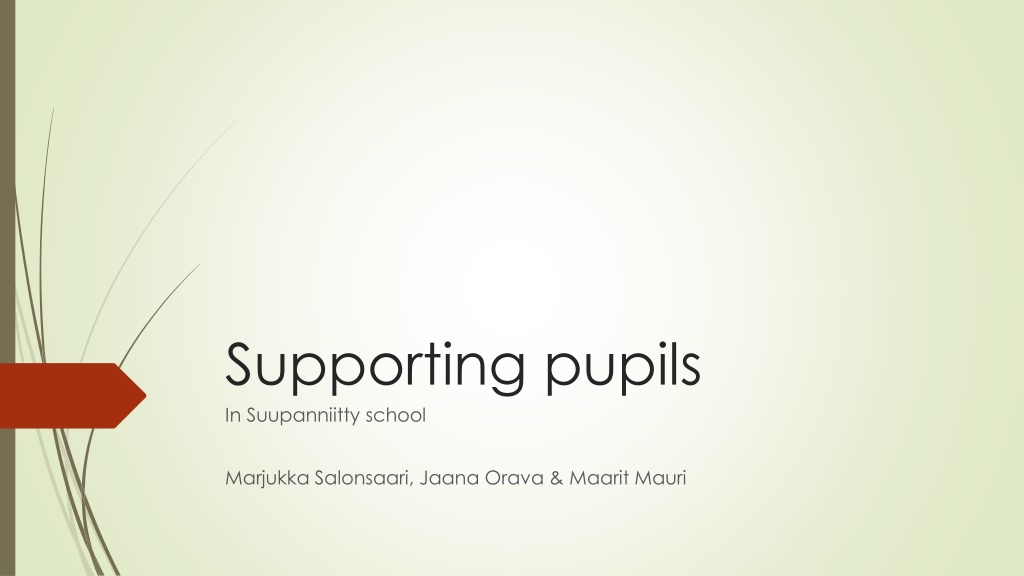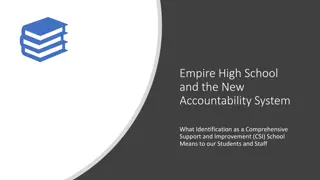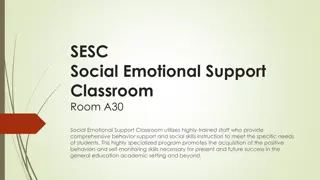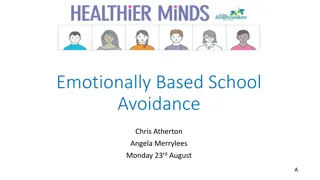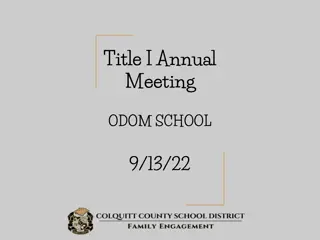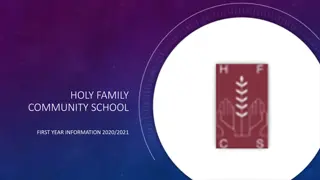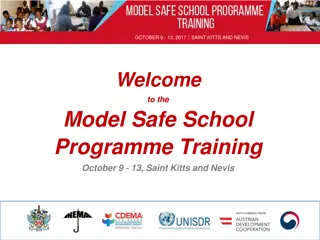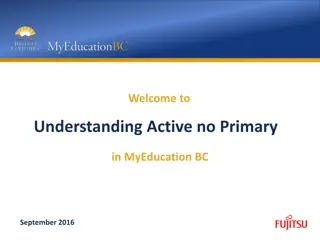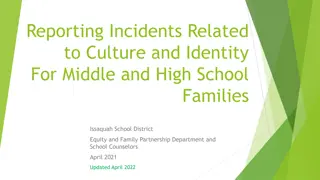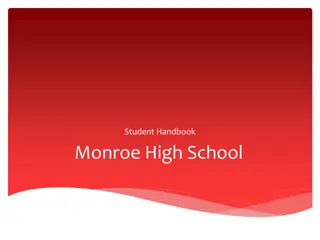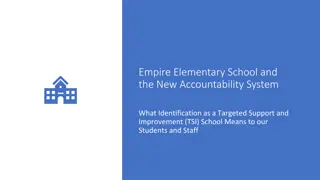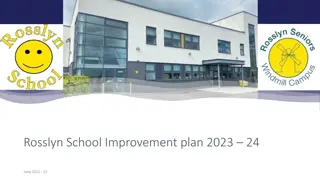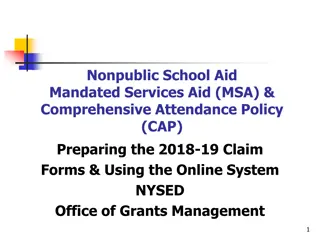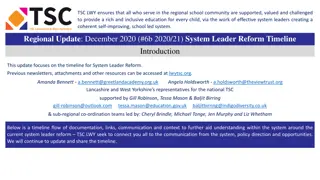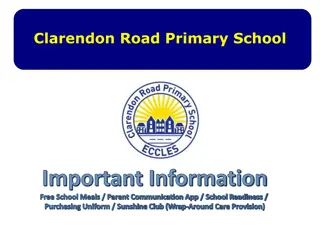Comprehensive Support System in Suupanniitty School
Suupanniitty School in Finland offers three levels of support for pupils: general support, intensified support, and special support. Various strategies and resources are utilized to assist students with diverse learning needs, including individualized educational plans (IEP) and small support groups. Part-time special needs education is provided to address specific difficulties and disabilities, aiming to help all students achieve their full potential.
Download Presentation

Please find below an Image/Link to download the presentation.
The content on the website is provided AS IS for your information and personal use only. It may not be sold, licensed, or shared on other websites without obtaining consent from the author. Download presentation by click this link. If you encounter any issues during the download, it is possible that the publisher has removed the file from their server.
E N D
Presentation Transcript
Supporting pupils In Suupanniitty school Marjukka Salonsaari, Jaana Orava & Maarit Mauri
To refresh your memories... The comprehensive school in Finland: The first six grades are called "alakoulu", t he last three grades are called "yl koulu" ALAKOULU ("LOWER") (7 12 years) HIGH SCHOOL, GYMNASIUM (16 19 years) VOCATIONAL SCHOOL (16 19 years) FUTURE YL KOULU ("UPPER") (13 15 years)
Three levels of support for two groups LEVEL OF SUPPORT GROUPS 1) GENERAL SUPPORT 1) GENERAL GROUPS 2) INTENSIFIED SUPPORT 3) SPECIAL SUPPORT 2) SMALLER GROUPS
Three steps of support for everybody GENERAL SUPPORT (84,8 percent of all pupils) For everybody in case of need Given by subject teachers INTENSIFIED SUPPORT (9,4 percent of all pupils) For pupils with learning difficulties and learning disabilities Given by subject teachers and special needs teachers SPECIAL SUPPORT (5,8 percent of all pupils) For pupils with learning disabilities in one or many subjects Individual educational plan (IEP) Given by subject teachers and special needs teachers Most pupils study in general groups, some in small groups (special needs education)
Part-time special needs education for everybody in need Part-time special needs education (levels 1-3) For every pupil in our school 5 special needs teachers, subject teachers, school assistants Special needs education (smaller groups, level 3) Three groups (7. - 9. grades) Special class teacher and classroom assistant All pupils have individual educational plans (IEP) One group for flexible basic education (9. grade) Special class teacher and classroom assistant Small support group for pupils in danger of exclusion (7.-9. grade) Special class teacher and mental health nurse
Part-time special needs education Aims to help pupils With learning difficulties/disabilities in some subjects With other kind of difficulties in studying/behaving Different methods of support Subject teacher and special needs teacher work together with the whole group in the same classromm Special needs teacher works together with 1- 5 pupils in "Varikko" ("garage" ;)) Homework group after school in Varikko by assistants Class assistant works in classroom with one pupil/whole group
Student counselling We have counsellors in yl koulu, as well as in high schools (=gymnasiums) and vocational schools 3 counsellors in our school Lessons for the 7th, 8th and 9th graders Getting to know the school (7th) occupations and the working life (8th) upcoming studies & the future (9th) Meetings with parents, teachers, school health nurses, a doctor, a welfare worker, a psychologist, special needs teachers and a mental health nurse Parental evenings, postgraduate evening etc. The most important: personal counselling Meeting the pupils face-to-face, one by one, being emphasized to the 9th graders
Supporting pupils with Finnish as a secong language (F2) Language awareness (National Curriculum 2014) All teachers are language teachers = All teachers teach the specific language and text types used in their subject All languages are valued and respected; pupils are couraged to use their own language while studying in class In reality...? Finnish and literature --> Finnish as a second language and literature (F2) syllabus (same subject with slightly different content of instruction) Free-choice mother language classes (if at least 4 pupils of the same language/town) ask for it) 2 hours / week F2 pupils 3,2 percent of all pupils in our school
